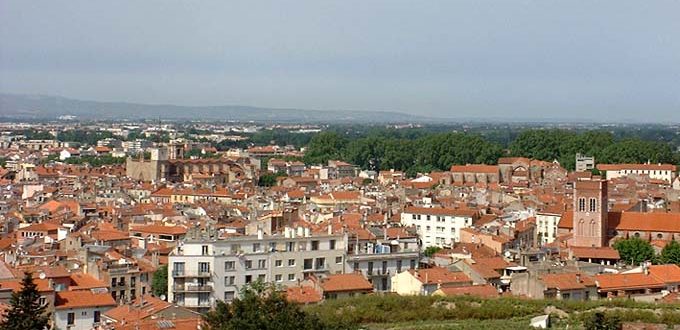侍酒师启程南法露喜龙产区探索
如果要去露喜龙(Roussillon),春天是她最好的时节;阳光,清风,送走了拥挤的度假人群,露喜龙刚刚恢复她平民天堂的本色。如果你已经领略过佩皮尼昂腹地和地中海岸的美食美景,可知在这饮一杯小酒,也很容易让人一见钟情,豁然开朗。
来自国内和韩国侍酒师大赛十强的选手们受邀露喜龙产区行,为期一个星期的旅程,可谓精彩纷呈。
3月12日 – 3月17日.
第一天 :
第一站:佩皮尼昂
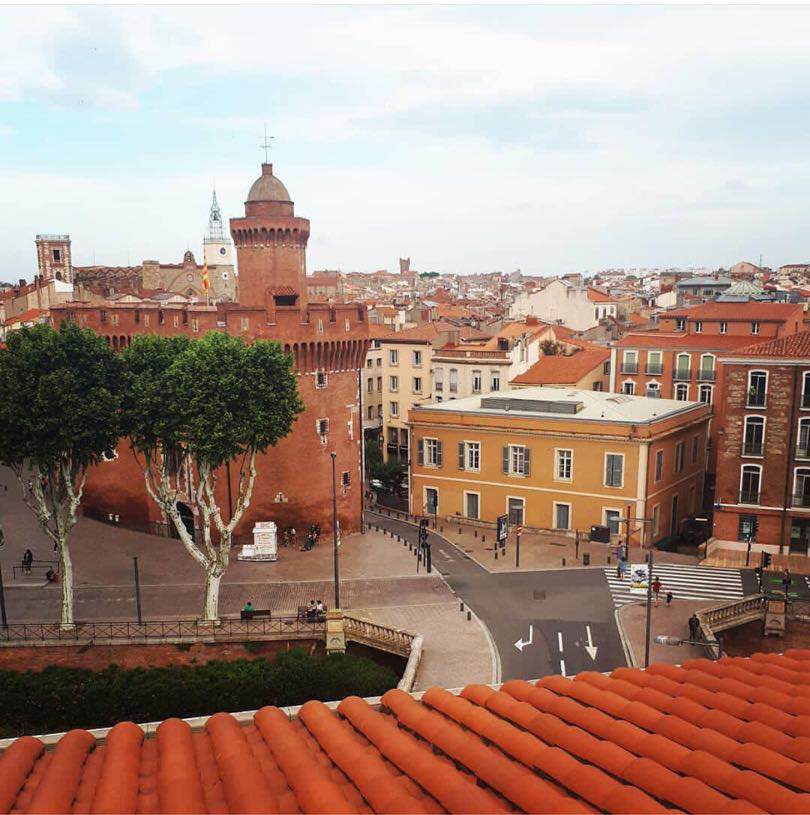
法国南部东比利牛斯省(Pyrénées-Orientales)的省会城市。地处法国最南端的露喜龙平原,泰河(La Têt)两岸,东近地中海岸,西接比利牛斯山脉。
佩皮尼昂是连接西班牙与法国的要塞,良好的地理环境使佩皮尼昂成为欧洲最美丽的旅游胜地之一,个别年份,一天之内既可下海游泳又能上山滑雪,享有全欧最秀美城市的美誉。
第二站:Le Café Vienne 维也纳咖啡
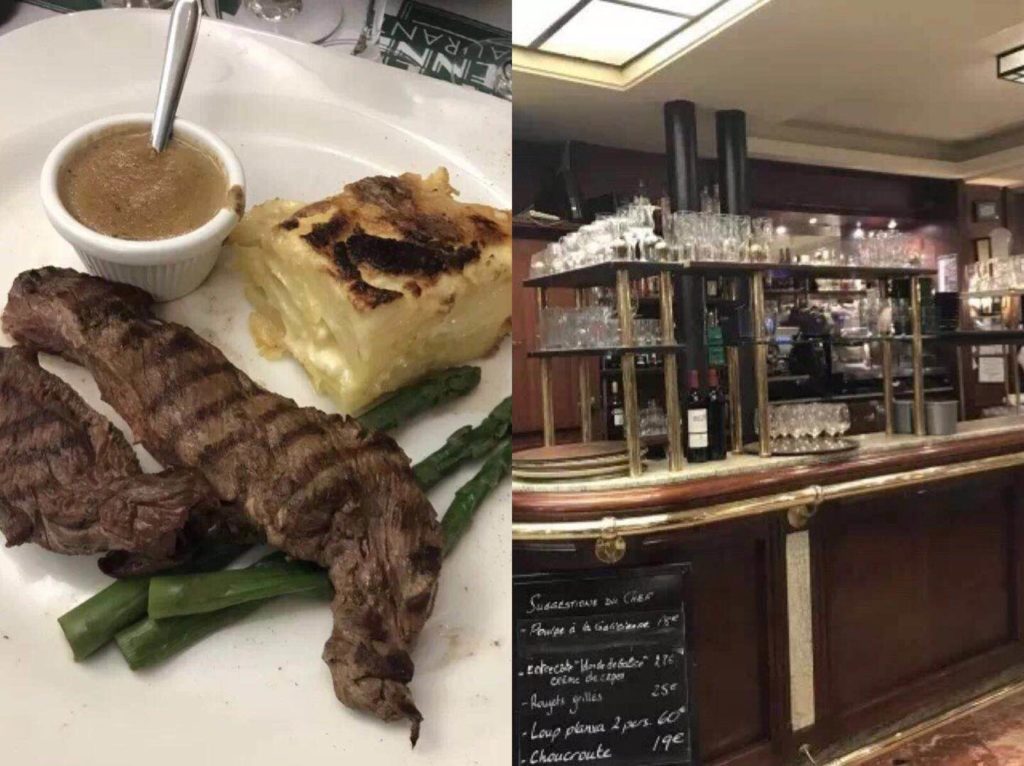
第二天 :
第一站:Vignobles Dom-Brial 唐-布里亚葡萄酒合作社

创立于1923年,拥有380名葡萄种植农,葡萄种植面积达2,500公顷,正因为如此,合作社可以生产出风格极为多变的葡萄酒。
在酿酒的同时,合作社非常注重环境保护,是法国首批获得“可持续发展项目葡萄种植者”认证的5家酒庄之一,建立了露喜龙的第一座太阳能农场(Solar Farm)。
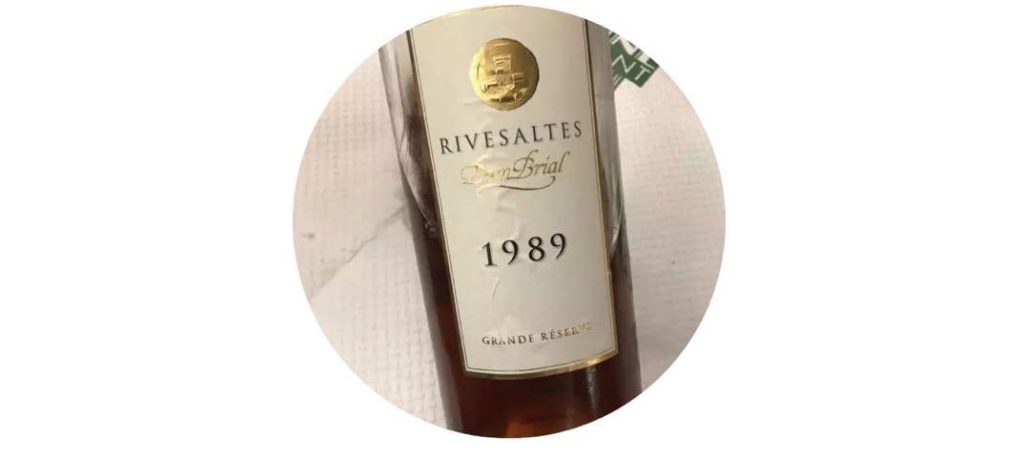
该合作社的麝香(Muscat)葡萄酒尤为值得纪念,因为据当地的传说,“Dom-Brial”曾经是那里的一个教士,他亲自酿造了一款麝香葡萄酒,并把它呈给皇帝,深得皇帝欢心。不过,唐-布里亚教士对皇帝说,“如果你想要这一款麝香葡萄酒,那就给我建一个学校,让我可以给这里的孩子教法语。”于是,皇帝同意了教士的请求,也因为这样,麝香葡萄酒从此广为人知,唐-布里亚成为露喜龙酿造麝香葡萄酒的第一人。
第二站:Domaine Piquemal 匹克曼家族酒庄

建于20世纪初,占地48公顷,葡萄园分布在莫里(Maury)和里韦萨特(Rivesaltes)产区。充满艺术美感的品酒室、高大崭新的不锈钢发酵罐以及其他的现代化技术设备,都展示出酒庄的现代化面貌和不容忽视的技术支撑。
匹克曼家族酒庄的葡萄园具有多样性的土壤,包括片岩、石灰质黏土、片麻岩和花岗岩等。在栽培葡萄时,酒庄尽力让不同的品种可以在最适宜的土壤中生长。
第三站:Lunch in Maison du Terrior 午餐
美味的午餐搭配露喜龙美酒,Eric Aracil,与庄主和侍酒师们开启接下来一天的参观酒庄行程。
第四站:Mas Amiel 阿美尔酒庄
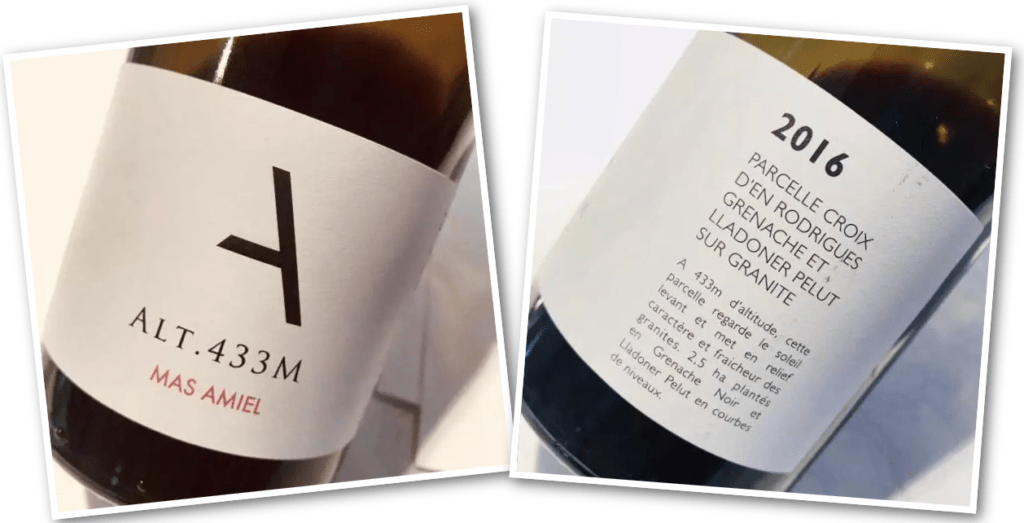

阿美尔酒庄被氧化的葡萄酒在上百年的老木桶中沉化,吸收了以前沉淀的风味特性。他们需要20、30或40年才能完全达到成熟
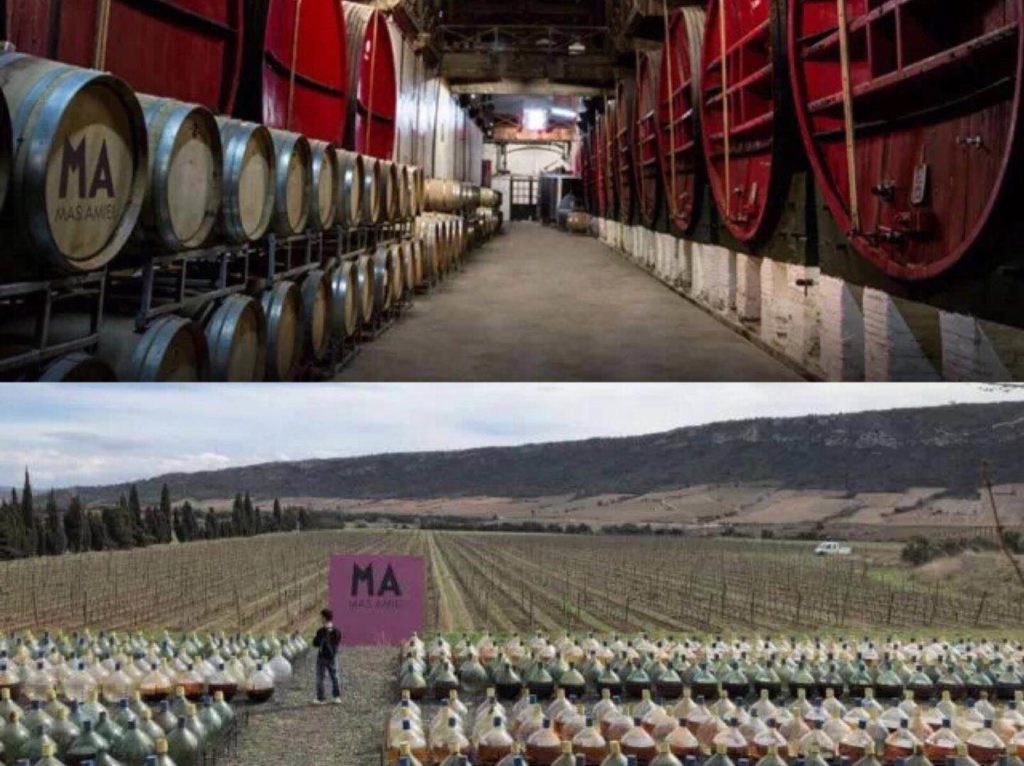
在每年6月初,将葡萄酒榨出注入这些玻璃瓶中,放在室外的露天坛子中(一个区域放置了一千个这样60升的坛子)。在玻璃瓶中长达12个月的时间里,葡萄酒主要受到阳光和昼夜温差的影响。这是一种独特且传统的老化bonbonne酿造法。
第五站:Domaine Cazes 卡哲仕酒庄

卡哲仕酒庄坐落在比利牛斯山脉和地中海之间,露喜龙地区的中心地带。
葡萄园所处地区的独特土壤是酒庄酿造高品质葡萄酒的保证,这里的土壤主要是石灰石和粘土,还有一些片岩和硅质鹅卵石。

由于卡哲仕酒庄种植主要有14种葡萄品种,每年的收获时间从8月中旬就开始,一直持续到10月中旬,在每种葡萄最佳的成熟状态时采收葡萄。采收后的葡萄根据酿酒风格的不同,选择是否去梗,是否压榨,还是整束发酵。
第六站:Dinner at La Table D’Aim 晚餐
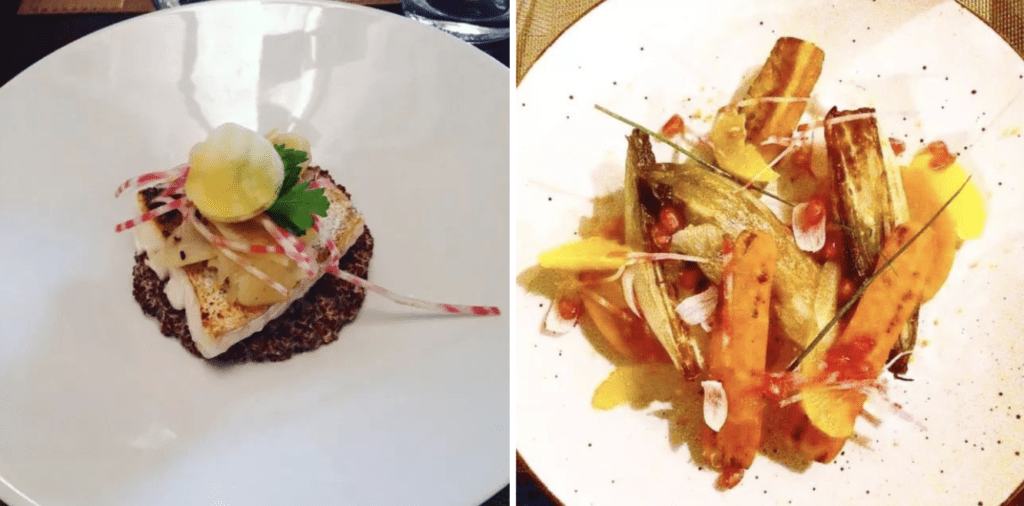
一如当地的风土人情,露喜龙葡萄酒朴素而纯真,蕴藏了一如当地的风土人情,露喜龙葡萄酒朴素而纯真,蕴藏了不少意外的惊喜,寻觅尝试其中,可以是你我这类平凡酒徒的一大乐趣。
一天的行程充实且收获满满,品尝了许多酒庄的佳酿与法餐。享受着蓝天,白云,当然还有大海吹佛过脸颊的春风。

精彩旅程还在继续。
第三天 :
第一站:Château de Corneill 德古尼拉古堡
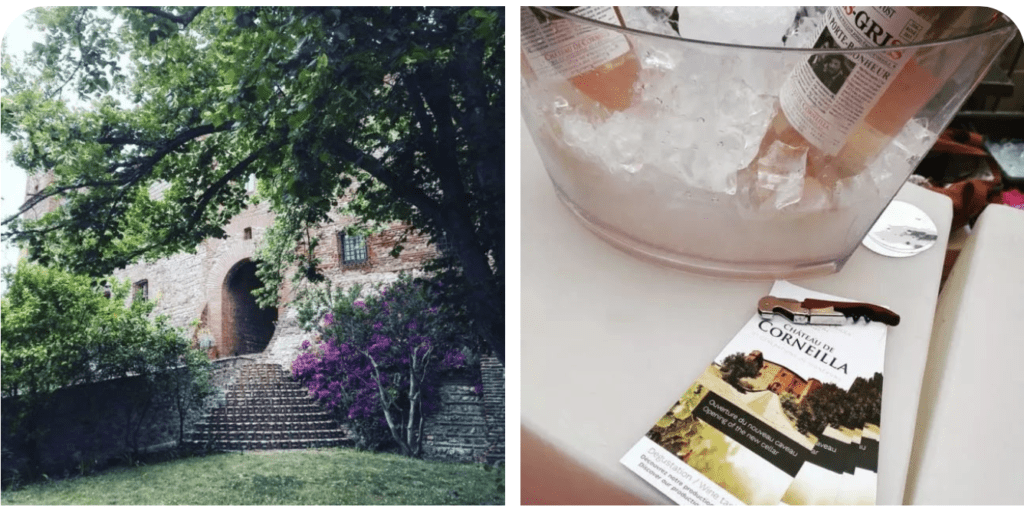
德里奥拉(Jonqueres d’Oriola)是法国南部露喜龙葡萄酒产区的名门望族,家族共拥有两座葡萄酒城堡,其中一座便是德古尼拉古堡。
古堡于12世纪由圣殿骑士团(Knight Templars)建立。在这座古堡里,可以看到一幅像枝叶招展、茂盛无边的葡萄藤般的德里奥拉家族族谱。
葡萄园距离比利牛斯山仅6公里,凉爽的夜晚有助于葡萄发展出足够的酸度和丰富的香气,所出产的葡萄酒都具有清新纯净的香气和口感。
第二站:Roque

法国小城科利乌尔(Collioure)被誉为拥有法国最蔚蓝的蓝天。坐落在赤红海岸(Côte Vermeille)的北端,背靠比利牛斯山区的小丘陵。这座迷人的小镇艺术氛围浓郁,云集了大批画家,马蒂斯曾说“全法国的天空没有比科利乌尔蔚蓝的”。
临近中午,走在这座小镇上,还参观了当地的鳀鱼工厂,是东比利牛斯山区城市的又一特色。
第三站:Cave I’Etoile
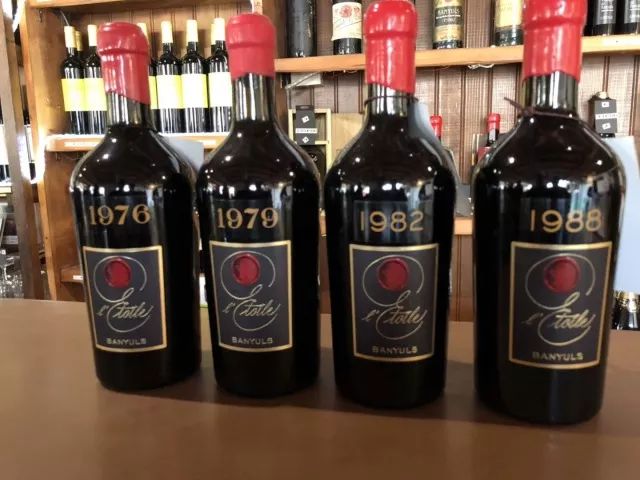
被《葡萄酒评论》评为2017年度的满分酒。
第四站:Château Valmy

自1930年以来,家族酿酒厂已经成功地将其葡萄酒的卓越品质与其葡萄园的美丽融为一体。传统与现代的酿造方式相结合。60英亩的葡萄庄园生产露喜龙山丘葡萄酒,里韦萨特蜜思嘉葡萄酒和里韦萨特贴标葡萄酒。酒庄拥有先进酿酒技术与经验,和传统的葡萄酒成熟发酵仓库,都使用木桶陈酿。
第五站:Dinner in La Villa Duflot 晚餐
晚餐在环境优美的Villa Duflot餐厅,搭配Tramontane Wines(北风酒庄)美酒,其实Tramontane原意是指从山那边吹过来的风,其实也就是指露喜龙西北部的科比埃山吹过来的风。这股风可以给葡萄园降温,透气,有利于葡萄的生长。
第四天 :
第一站:Château Nadal Hainaut 纳达尔·埃努古堡
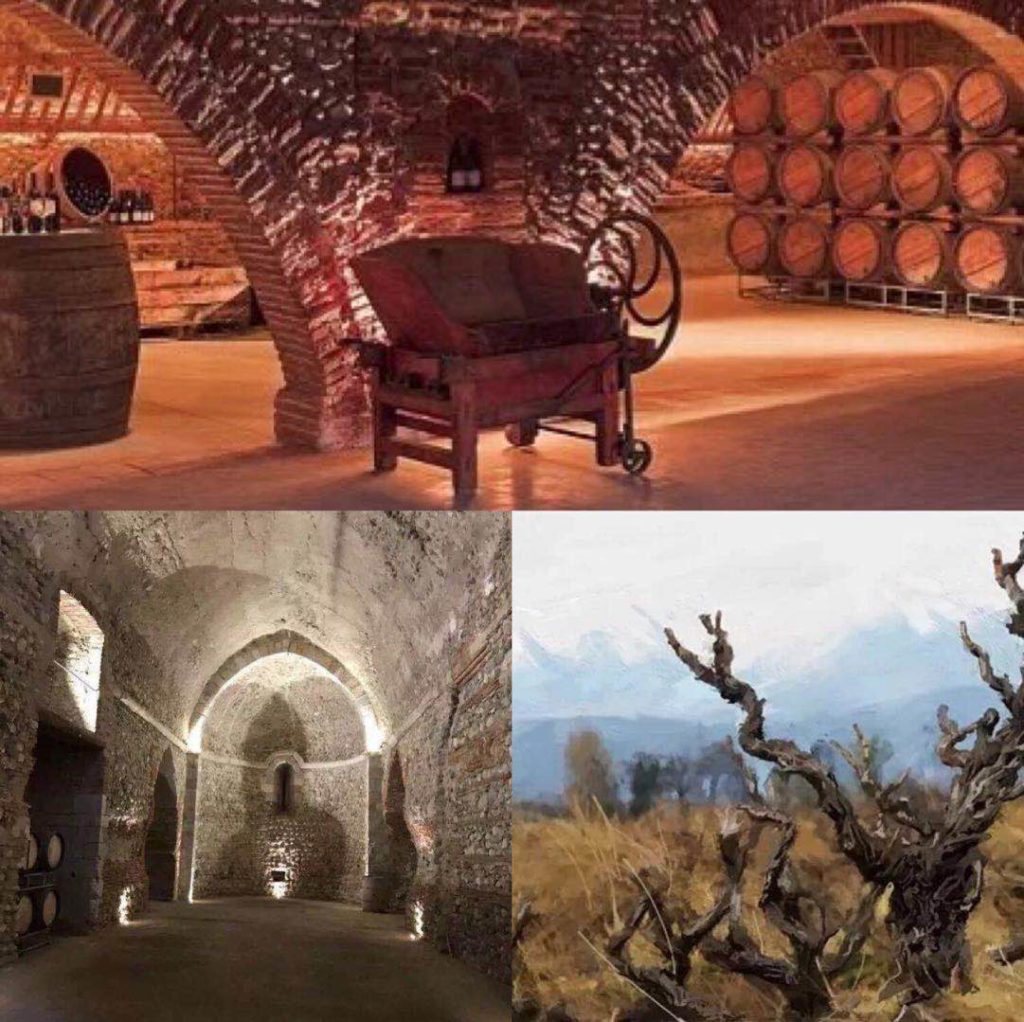
现代与传统的结合,碰撞出了神奇的火花!采用冷处理和气动压榨等先进的葡萄酒酿造工艺,还沿用了古老的浸皮和搅桶传统。
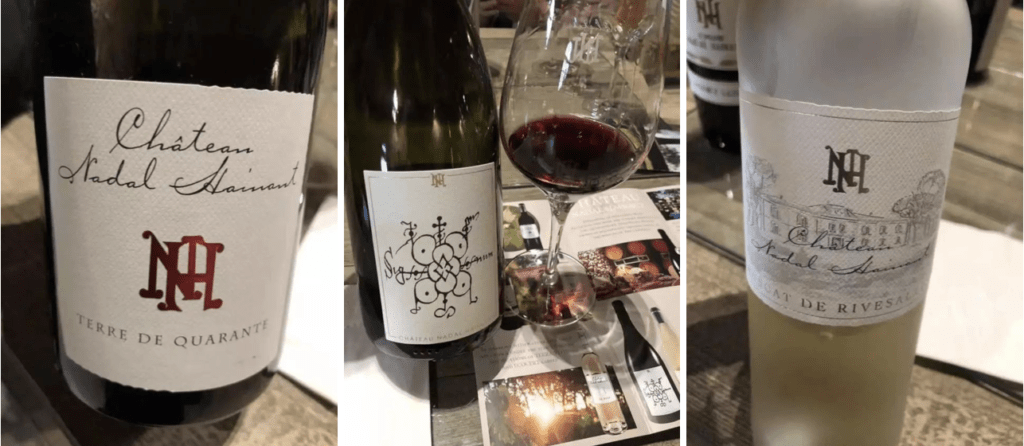
纳达尔·埃努古堡始建于1830年,葡萄园总面积为53公顷,园内的土壤类型为表面布满砾石的石灰岩和黏土土壤,排水性良好,而且能为葡萄树提供充足的养分。园内白天十分炎热干燥,砾石能将白天吸收到的热量在凉爽的夜晚释放,以保护葡萄树免受低温的伤害。
第二站:Château de L’ou 德露酒庄
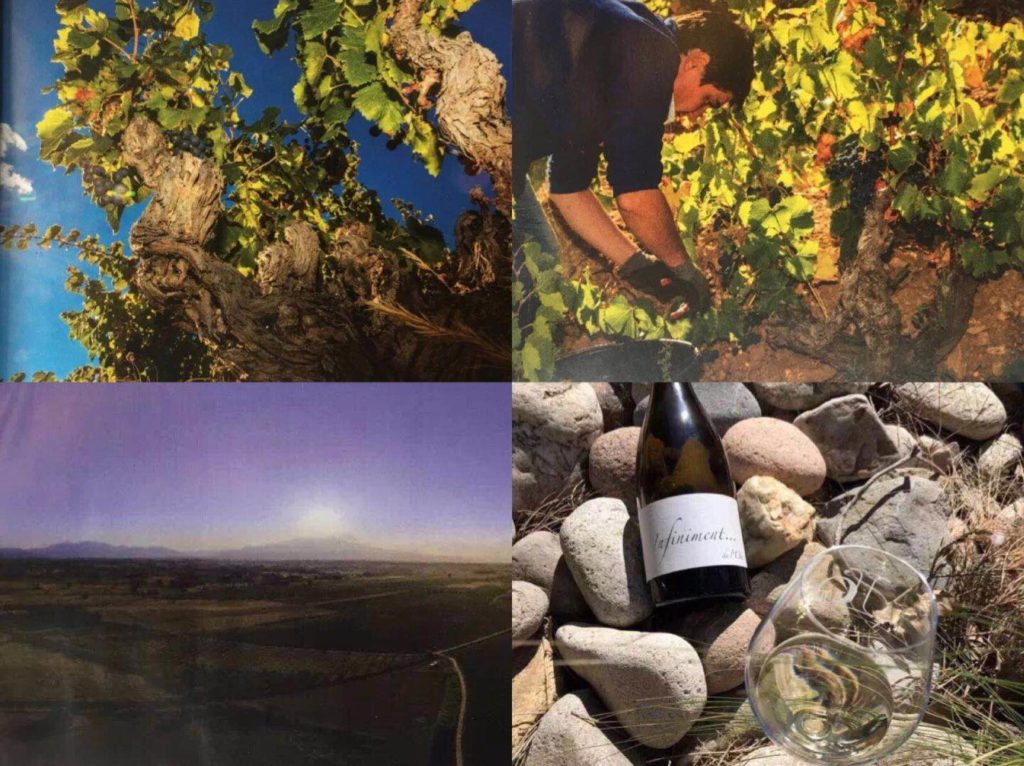
酒庄建于1998年,30公顷的葡萄园位于比利牛斯山山麓,与很多小块田组成。
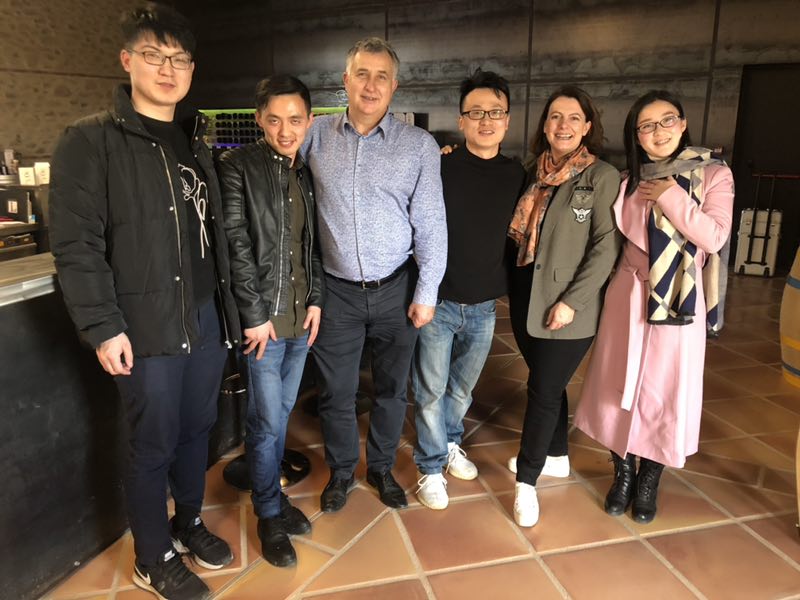
德露酒庄的葡萄采摘全部由人工完成。葡萄园员工严格根据酿酒师对品质的要求进行葡萄采摘工作。
选择在太阳刚升起一直到上午10点的时间内进行采摘,以便于最大程度的保持葡萄的新鲜度。有采摘下来的葡萄在运输过程中受损,也为了简化人工搬运,所有采摘下来的葡萄被分装于10公斤装的板条箱中。采摘的时机取决于对葡萄的品尝,其中果皮及果核的细腻程度是非常重要的考量因素。
第三站:Clos Saint Georges
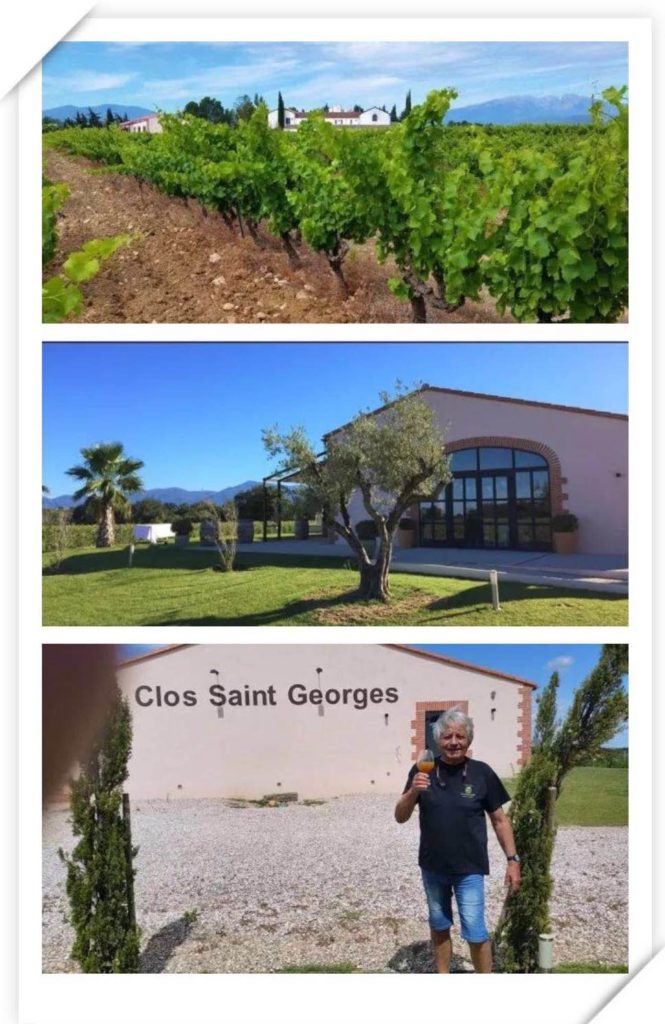
第四站:Maison Paré
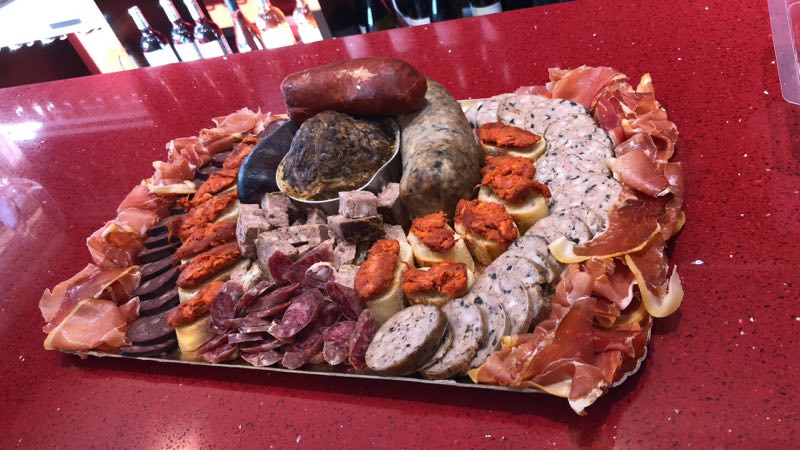
日落时分,来到了Maison Paré,了解品尝加泰罗尼亚猪肉熟食店。
第五站:Dinner at Le Saint Jean 晚餐
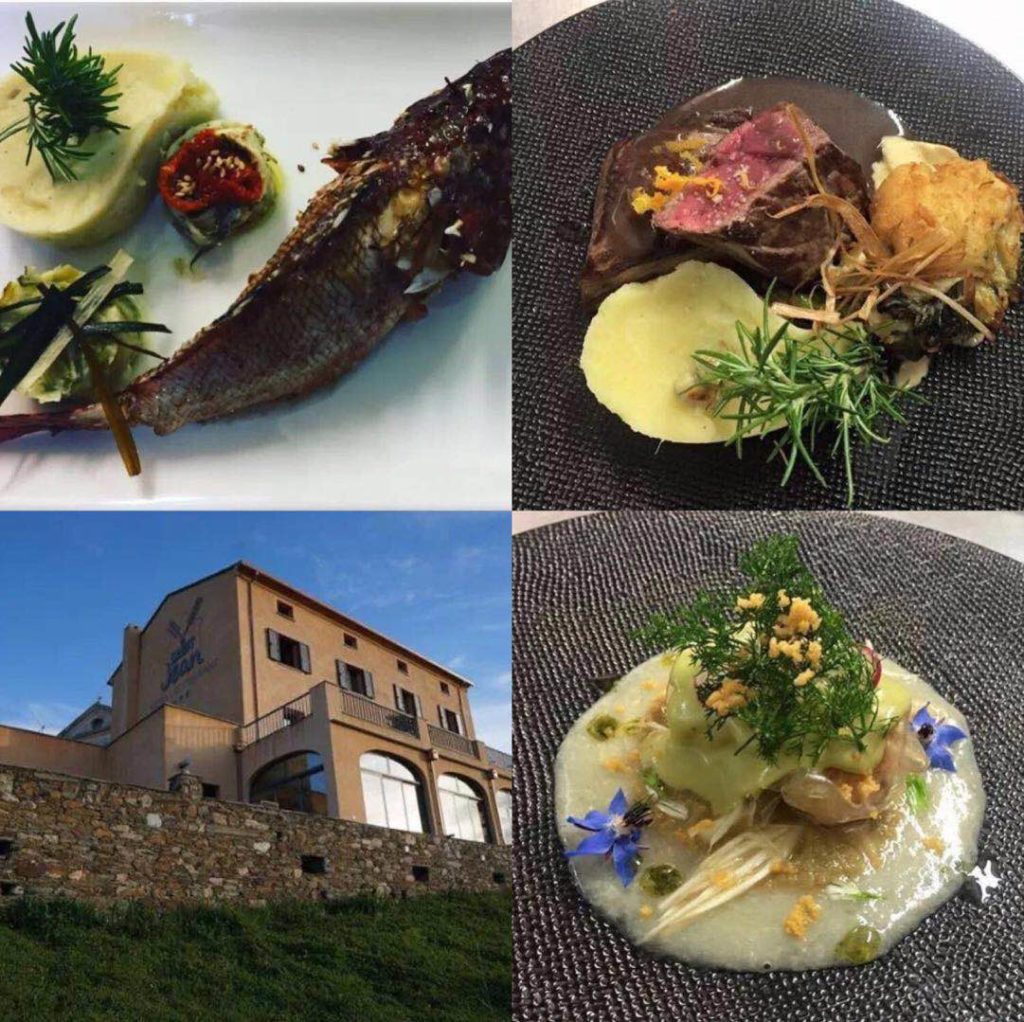
这个南法深藏不露的古老葡萄酒产区,初步领略露喜龙的古老文化传承、地中海风光以及多姿多彩的独特美酒!
露喜龙之旅的最后两天,一行5人依然与美酒美景相伴,尽情地呼吸露喜龙的酒香之美和文化之美。露喜龙产区之旅也匆匆的接近尾声。
这个一年365天中有320天晴天的产区,在我们侍酒师团队到达的短短一周时间里,欢送我们时依旧绽放它最灿烂绚丽的阳光。
第五天 :
第一站:Olivier Bajard shop
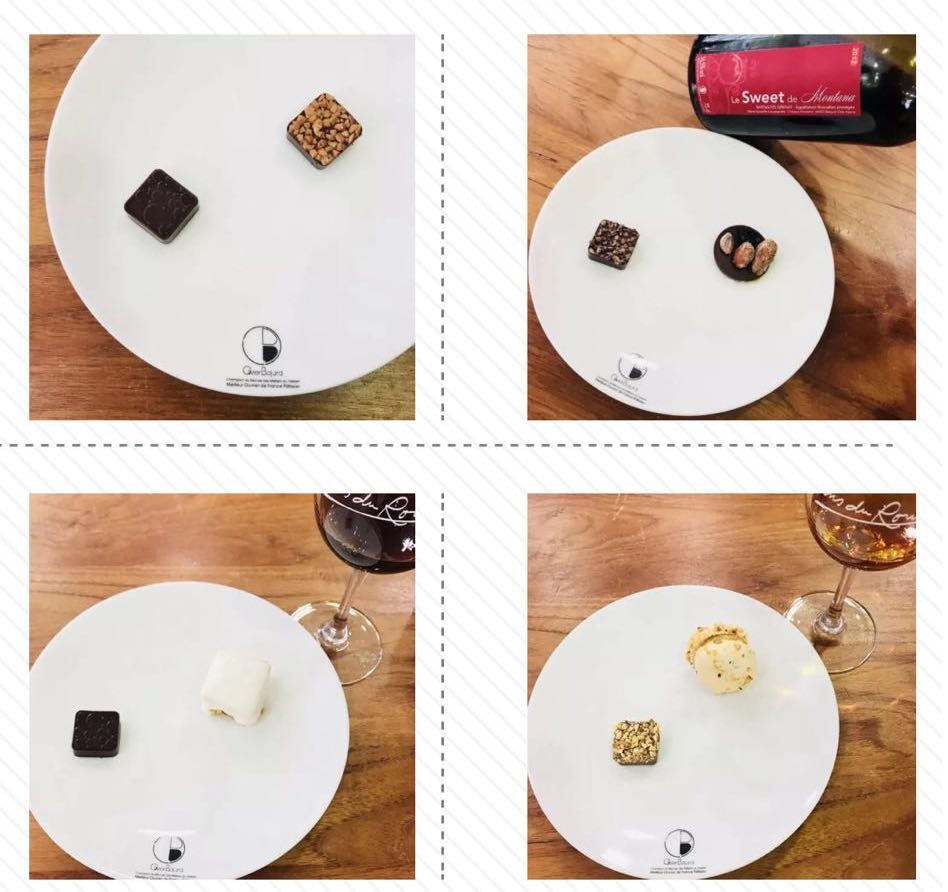
出自Olivier Bajard大师的法式甜点搭配美酒
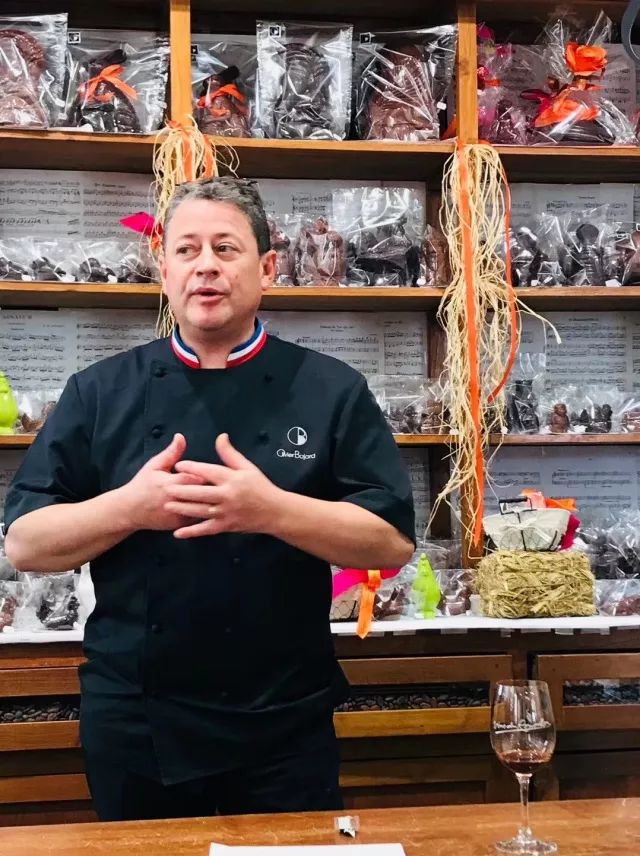
Olivier Bajard,是法国著名的国宝级蛋糕甜品大师、巧克力大师和糖艺大师,被誉为国宝级甜点大师,在法国绝对算是年轻有为的代表,在法国人心中有着举足轻重的地位!
出生于烘焙世家的Olivier Bajard也算得上是一个烘焙界的“少年天才”。被誉为世界甜点界的莫扎特(Mozart)、世界甜点冠军、是当代甜点界影响力前三的甜点大师。
产区行来到的倒数第二天,Olivier给侍酒师们妥妥的开了大眼界,这位出色的法国甜点MOF,一早,一场各类型露喜龙天然甜酒与各种口味,浓度,甜度的巧克力搭配美酒的研讨会。永远向大师学习!
第二站:Cave Arnaud de Villeneuve

酒庄有三个著名的酿酒厂,位于佩皮尼昂附近的地中海海岸线。专注生产高质量的葡萄酒和特殊的AOC天然甜葡萄酒,如法定产区里韦萨特蜜思嘉天然甜和法定产区里韦萨特葡萄酒。
所谓天然甜葡萄酒,就是Arnaud de Villeneuve先生在1229年发明的,露喜龙之旅自然不能错过天然甜鼻祖家族所经营的合作社。
第三站:Domaine de Rombeau
自1726年就属于Fabrègue家族,酒庄代代相传至今,酿酒的经验与历史完整的传承下来。在这里,庄园尊重传统,也毫不犹豫的采用最新的酿造理念,古老与现代在龙堡酒庄交融,只为酿造质量恒定的特色佳酿。
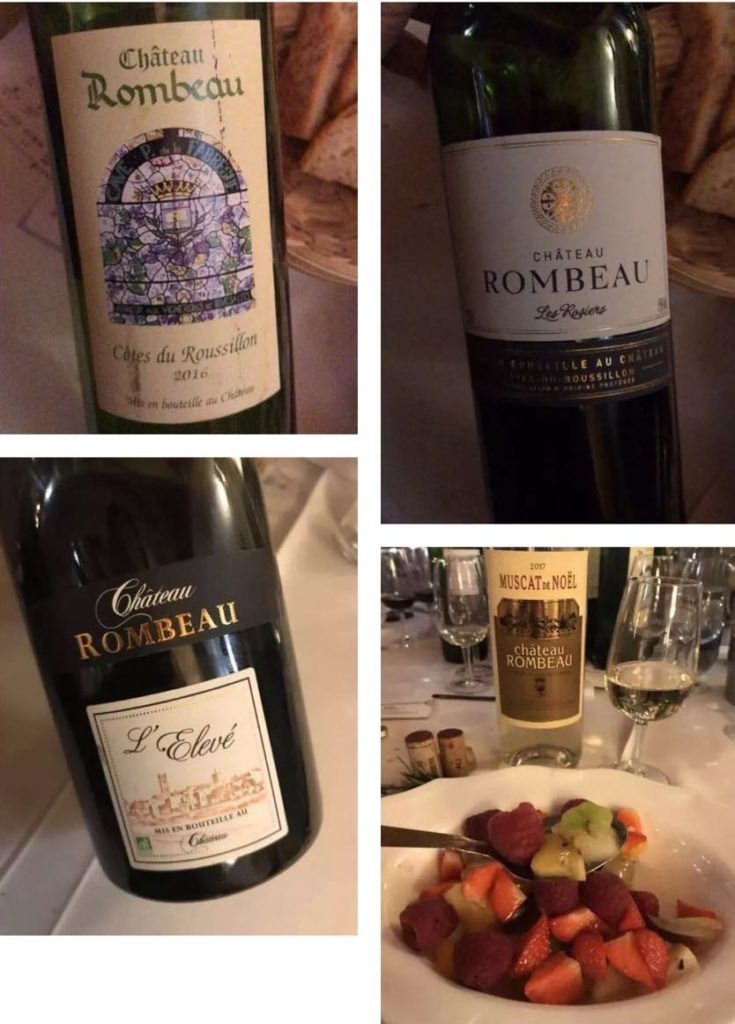
参观庄园,并在庄园享用庄主的午宴款待。
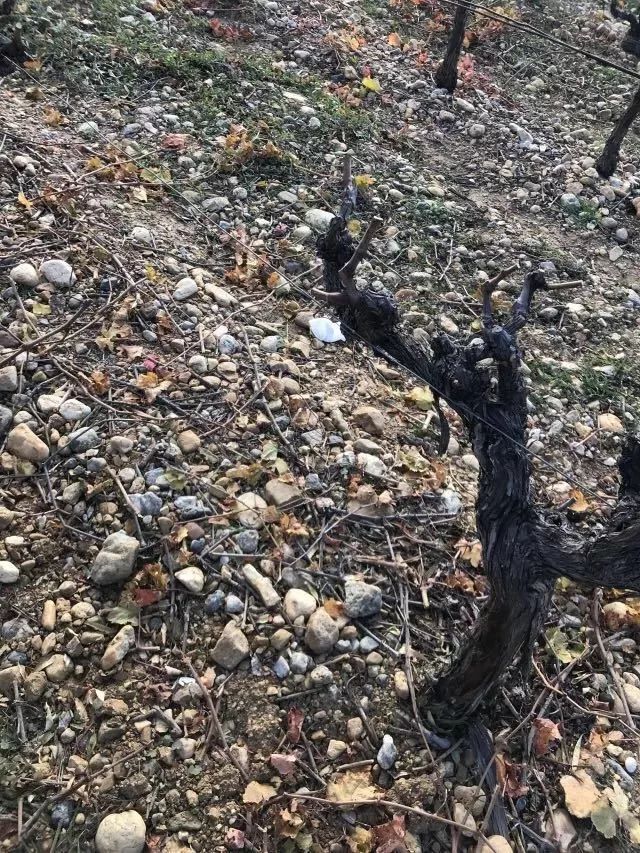
主要出产蜜思嘉甜白葡萄酒,里韦萨特经典甜酒,露喜龙山丘葡萄酒等。充分体现了南法葡萄酒的特色。透露露喜龙风土的灵魂。
第四站:Vignerons Catalans 唯卡葡萄酒集团
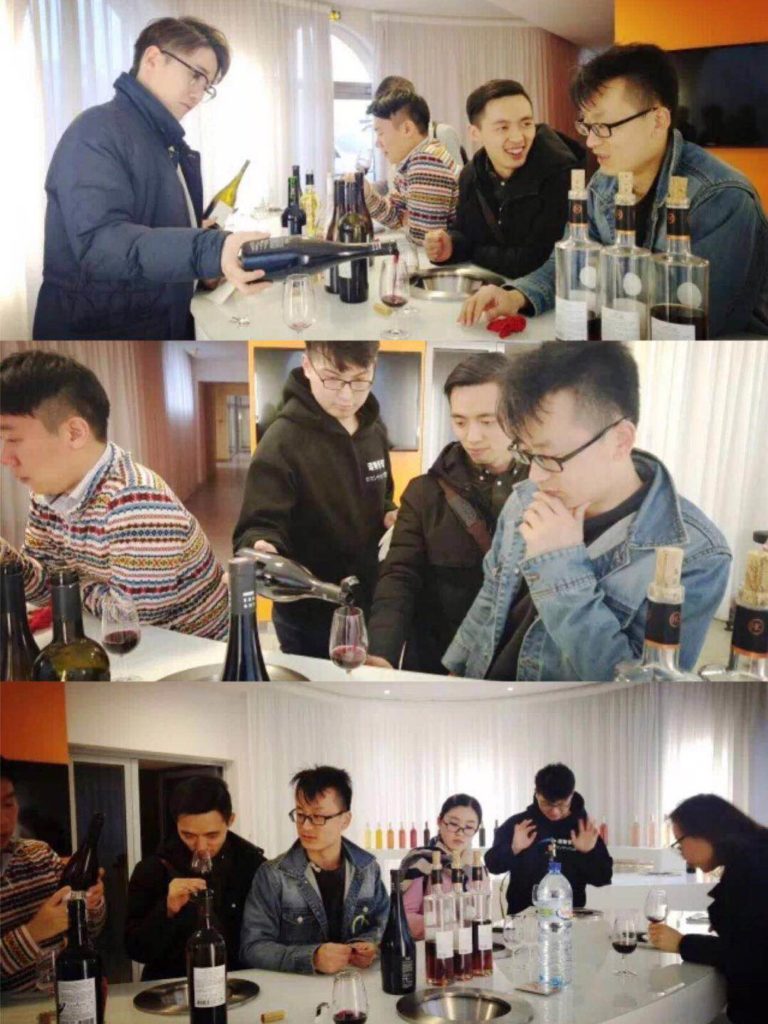
唯卡葡萄酒集团于1964年成立,是露喜龙地区最大的几个葡萄酒农合作社联合建立的酿酒人联合会集团。这里的酿酒人多年以来不懈努力,专研酿酒技术,满足客户要求,酿制优质的葡萄酒。
在品鉴葡萄酒的同时,聆听酿酒师诠释每一款酒背后的人文背景或者奇闻异事,当算得上人生一大乐事。

如今,唯卡集团聚集了1500多名葡萄酒农,拥有10000公顷的葡萄地,在露喜龙地区法定葡萄酒市场上优势显著。集团精心开发了多个品牌,这些葡萄酒代表了法国南部最独一无二的风土。是当之无愧的露喜龙第一大葡萄酒集团。
第五站:Dinner at Le Clos des Lys 晚餐
在这里品尝一顿传统的法式大餐,主厨Seguret是法国米其林三星厨师,将加泰罗尼亚传统菜的做法进行创新,当地餐食搭配当地的葡萄酒,无不领略搭配的精妙之处。
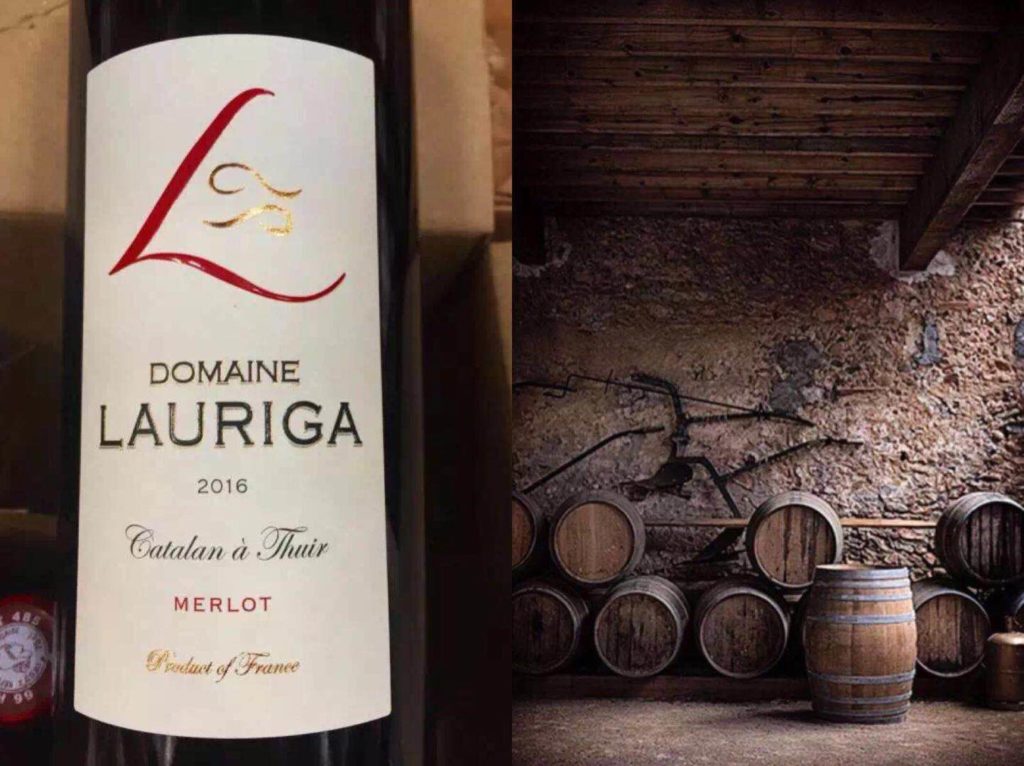
搭配Domaine Lauriga酒庄美酒。
酒庄最初是由Clar家族建立,有一个古老的地窖,如今配备了现代化的葡萄酒酿造法和老化试验器。葡萄园占地60公顷,覆盖了3个关键的露喜龙土地,种植了传统的葡萄品种,以及其他更多的国际品种(西拉, 赤霞珠, 慕合怀特, 梅洛),生产出具有典型地区特色的芳香葡萄酒。
葡萄园主要采用罗亚特修剪系统(Cordon de Royat pruning system),每公顷种植密度为5400棵葡萄树,产量为45百升/公顷。葡萄部分是手工收获,部分是用机器收割,用传统的方法酿造出葡萄酒。
第六天 :
第一站:Domaine Lafage 拉法奇酒庄
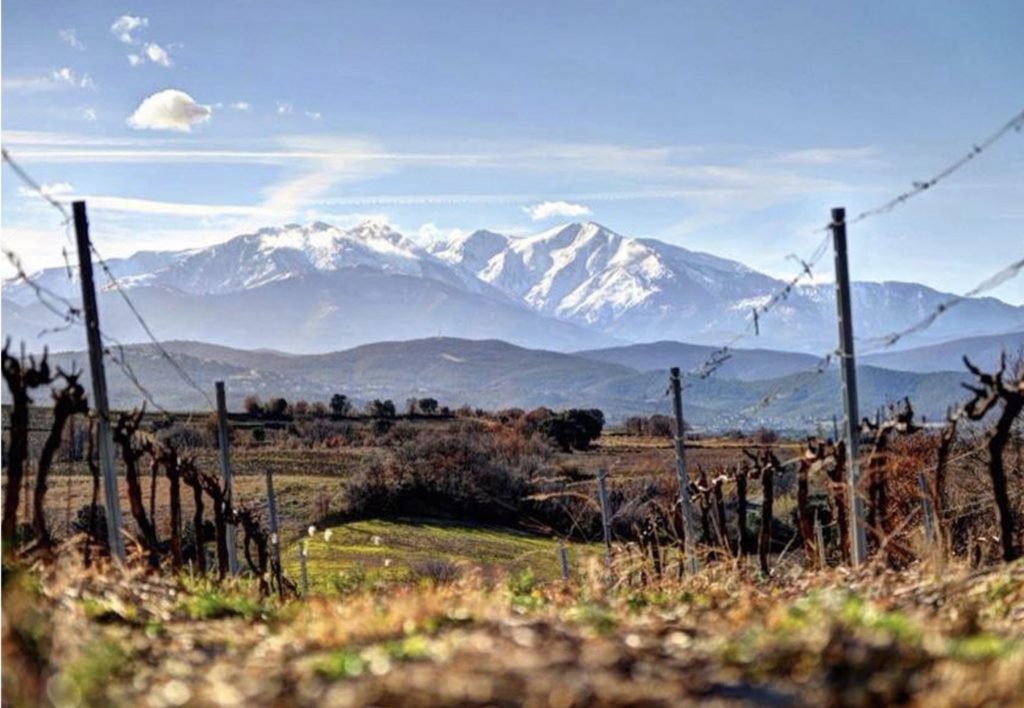
拉法奇酒庄位于地中海和科比埃山之间,其建筑为15世纪建成的一个石头房子。
这个酒庄最大的闪光点在于拥有国际一流的夫妻档酿酒师和获得罗伯特·帕克(Robert Parker)主创的《葡萄酒倡导家》(Wine Advocate)90分以上高分点评的10多款超优酒款。
拉法奇酒庄目前拥有160公顷葡萄园,种植16种葡萄品种,出产20款风格各异的葡萄酒,平均年产量为七十万瓶,70%的收入来自出口市场。酒庄本身拥有完整的葡萄酒生产线和灌装线。葡萄园里的土壤以黏土和白垩土为主,来自西北部的山风可以有效降温,有利于霞多丽(Chardonnay)、长相思(Sauvignon Blanc)、梅洛(Merlot)和赤霞珠(Cabernet Sauvignon)的生长。
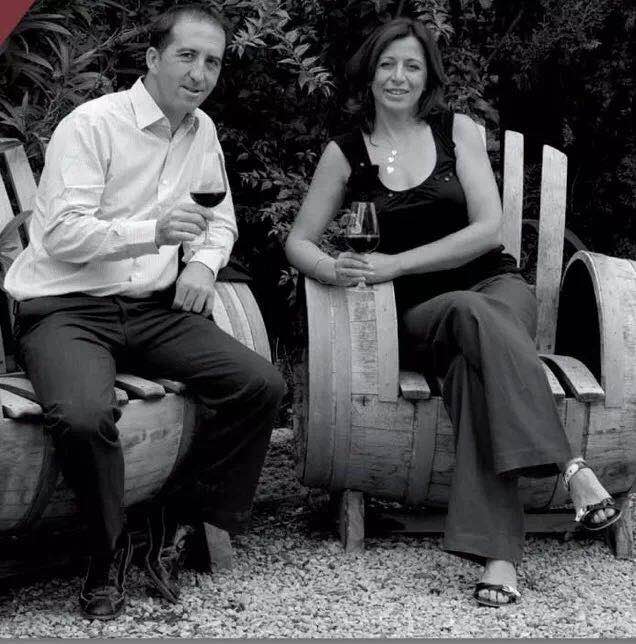
拉法奇酒庄的拥有者和酿酒师为让-马克·拉法奇(Jean-Marc Lafage)和其妻子艾丽娅(Eliane)。
第二站:Lunch at Le Tire Bouchon 午餐
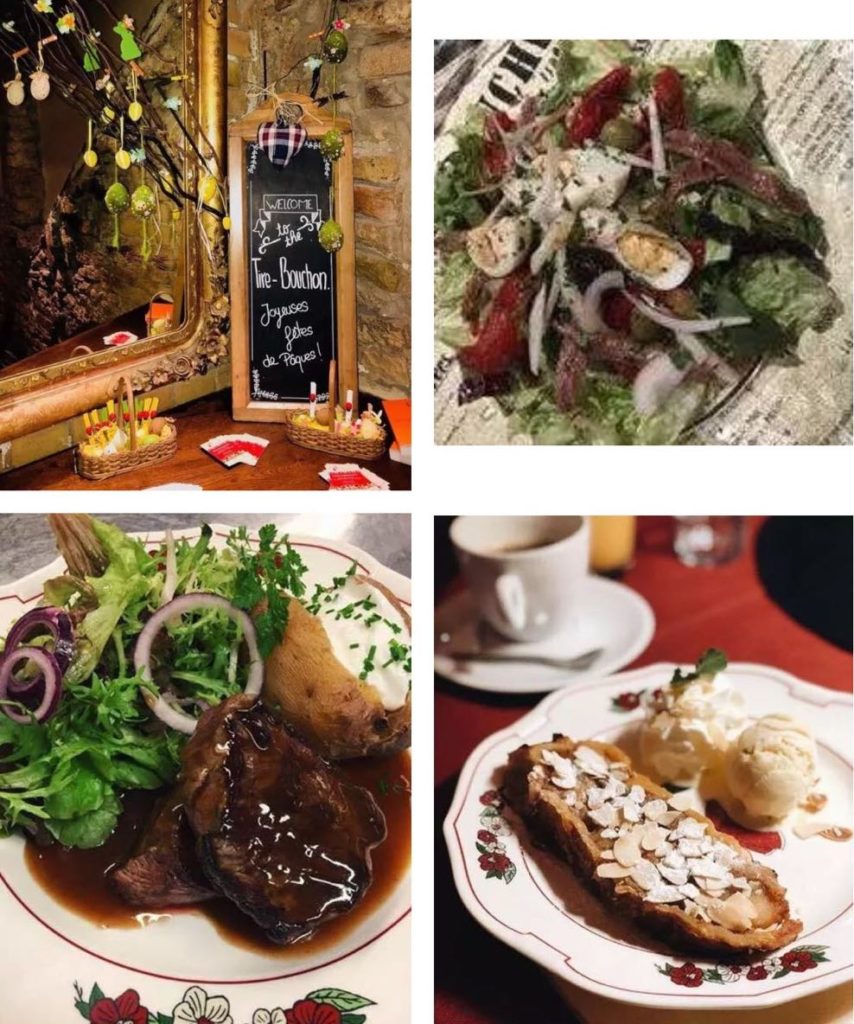
最后一天侍酒师们与Eric共享美食告别此次旅程。
愉快又充实的露喜龙产区之旅到此结束,再次俯瞰这个得到上天眷顾的古老葡萄酒产区,它依然显得无比的神秘和广阔,依然有无数的传奇和美酒去探索、美景等待我们再次探索。
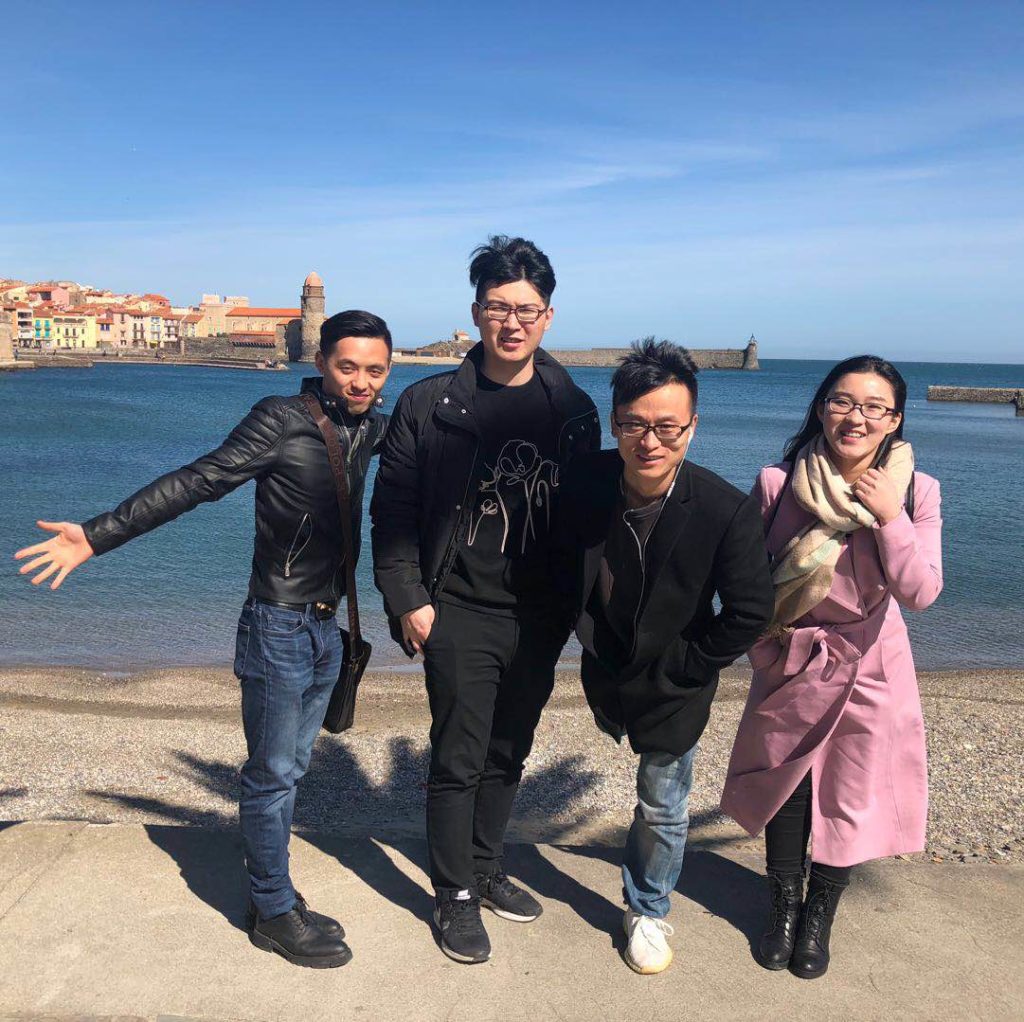
Sommelier delegation set out to explore Roussillon wine region
If you plan to visit Roussillon, spring is the best time to go. The sun, the wind, bring the crowd of holidaygoers to life. Roussillon has returned to the popular heaven it has always been. If you’ve experienced the food, wine and heart of Perpignan and its Mediterranean coast, you know how easily you can fall in love with it.
The top ten sommeliers from China and Korea were invited to visit Roussillon for a one-week wine regional tournament. They experienced the beauty of Roussillon first-hand.
From March 12 to March 17.
DAY 1 :
The first stop:Perpignan

Perpignan is the capital city of Pyrénées-Orientales in the South of France. Located at France’s southernmost tip, on both sides of the La Têt River, the east is near the Mediterranean Sea and west is the Pyrenees.
Perpignan is a fortress linking Spain and France. This excellent geographical environment makes Perpignan one of the most beautiful tourist destinations in Europe and one of the best places to cultivate grapes. People can swim in the sea and go skiing in the mountains in the same day, enjoying one of the most scenic cities worldwide.
The second stop:Le Café Vienne

DAY 2 :
The first stop:Vignobles Dom-Brial

Founded in 1923, it has 380 grape growers and a vineyard of 2,500. Because of this, cooperatives can produce widely flexible styles of wines.
The cooperative paid great attention to environmental protection. It was one of the first wineries in France to obtain the “sustainable development project grape grower” certification and established Roussillon’s first solar farm.

The Muscat wine is particularly worthy of commemoration. According to local legends, “Dom-Brial” was once a priest there. He personally brewed a Muscat wine and presented it to the king winning his favor. However, the priest Dom-Brial told the king: “if you want this Muscat wine, build a school for me where I can teach the children.” So, the king agreed to the priest’s request. This story remains widely told to this day and has brought Muscat wines to the forefront. Dom-Brial was the first person to make Roussillon’s Muscat wines.
The second stop:Domaine Piquemal
 Built in the early 20th century, it covers an area of 48 hectares and vineyards are located in the Maury and Rivesaltes producing areas. The aesthetics of the wine-tasting rooms, tall new stainless-steel fermentation tanks and other modern technical equipment all demonstrate the winery’s modernity and technical support.
Built in the early 20th century, it covers an area of 48 hectares and vineyards are located in the Maury and Rivesaltes producing areas. The aesthetics of the wine-tasting rooms, tall new stainless-steel fermentation tanks and other modern technical equipment all demonstrate the winery’s modernity and technical support.
The vineyards of the Piquemal family have a diverse range of soils, including schist, calcareous clay, gneiss, and granite. The winery grows a wide variety of grape varieties in the most optimum of its different soils.
The third stop:Lunch in Maison du Terrior
Eric Aracil, winemakers and sommeliers gather together for a delicious lunch paired with a variety of Roussillon wines.
The forth stop:Mas Amiel


Mas Amiel’s oxidized wines sink in centuries-old wooden barrels and absorb the previously precipitated flavor characteristics. They need 20, 30 or 40 years to fully reach maturity.

Each year in early June, the wine is squeezed into glass jars and placed in outdoor open-air jars (a thousand of such 60-litre jars are placed in one area). In the glass, the wines age for up to 12 months, affected by the temperature difference between day and night. This is a unique and traditional aging “bonbonne”wine brewing method.
The fifth stop:Domaine Cazes

Domaine Cazes is located in the heart of the Roussillon region between the Pyrenees and the Mediterranean Sea.
The estate’s high-quality wines are brought to life by the region’s unique, mainly limestone and clay, but also schist and siliceous pebbles.

Due to the 14 grape varieties, the annual harvest time starts from mid-August and continues until mid-October. Grapes are harvested at the best ripening state of each variety. After harvesting the grapes and depending on the style of the wine to be produced, the winemakers decide whether to remove the stems or not, whether to squeeze, or the whole bunch of fermentation.
The sixth stop:Dinner at La Table D’Aimé

Just like local customs, Roussillon’s wine is elegant and natural. It contains a lot of unexpected surprises of great pleasure for ordinary drinkers like you and me.
The day’s trip was engaging and full of appreciation, the sommeliers tasted many wines paired with local French cuisine. The delegation had a fantastic meal under blue skies, white clouds, and of course the gentle breeze of the sea.

The wonderful journey continues..
DAY 3 :
The first stop:Château de Corneilla

Jonqueres d’Oriola is a prominent family in the Roussillon wine region of southern France. The family owns two wine castles, one of which is Château de Corneilla.
Templar Knights founded the castle in the 12th century. In this ancient castle, you can see the noble genealogy of the Jonqueres d’Oriola family.
The vineyards are only 6 km away from the Pyrenees, and the cool night helps the grapes develop sufficient acidity and a wide range of aromas. It produces fresh and pure aromas and taste wines.
The second stop:Roque

Collioure is a small town known for having the bluest sky in France. It is located on the northern tip of the Côte Vermeille, bordering the hills in the Pyrenees. This charming town has a strong artistic atmosphere and has gathered a large number of painters. Matisse once said: “the sky in France is not as blue as in Collioure”.
At noon, the delegation enjoyed walking in this small town, and visiting a local anchovy factory, yet another distinctive feature of the Pyrenees.
The third stop:Cave I’Etoile

Rated with a score of 100 by the famous La Revue du Vin de France in 2017.
The forth stop:Château Valmy

Since 1930, the family brewery has succeeded in blending the excellent qualities of its wines with the beauty of its vineyards, with a combination of traditional and modern methods of brewing. The 60-acre grape estate produces cote du Roussillon wines, Rivesaltes Muscat and Rivesaltes labelled wines. The winery has advanced winemaking techniques and experience, all using barrel-aging in wine mature fermentation warehouses.
The fifth stop:Dinner in La Villa Duflot
The delegation had dinner with Tramontane Wines’ owners in the beautiful Villa Duflot restaurant. In fact, Tramontane is the name of the wind blown over the mountains of Corbieres in the northwest of Roussillon. It blows through the vineyards helping the grapes reach maturity. The winery is named after this Northern wind.
DAY 4 :
The first stop:Château Nadal Hainaut

The combination of modernity and tradition ignites a spark of magic! The use of advanced winemaking techniques such as cold treatment and pneumatic pressing also follows the ancient maceration and mixing barrel tradition.

Château Nadal Hainaut was built in 1830. The vineyard has a total area of 53 hectares. The type of soil in the vineyard is gravelly limestone and clay soils providing good drainage and sufficient nutrients for grape growing. The vineyard is very hot and dry during the day, the gravel can release the heat absorbed during the day on cool nights that keep it from being damaged by freezing temperatures.
The second stop:Château de L’ou
Built in 1998, 30 hectares of vineyards are located in the foothills of the Pyrenees with many small plots.

Grapes in the winery are gathered by manual picking. The vineyard staff strictly follows the winemaker’s requirements for quality grape-picking.
The picking begins just before the sun-rise until 10 o’clock in the morning, in order to maintain the freshness of the grapes. The picking season depends on the nature of the grapes, and the delicateness of the grape peels and kernels are of an importance consideration.
The third stop:Clos Saint Georges

The forth stop:Maison Paré

It was under the fading light of sunset that the delegation arrived at Maison Paré to visit the Catalan Delicatessen.
The fifth stop:Dinner at Le Saint Jean
This ancient wine region, located in southern France, is filled with Roussillon’s ancient cultural heritage, set within a beautiful Mediterranean scenery, and overflowing with a variety of unique wines.
On the last two days of the regional tour, the group of sommeliers was accompanied by the beautiful landscape of Roussillon in their last days of tasting delicious Roussillon wine. The wonderful regional tour was about to come to an end.
This region, with 320 sunny days a year was about to say goodbye to its sommelier delegation in the same way it greeted them: with the brightest of sunny weathers.
DAY 5 :
The first stop:Olivier Bajard shop

Artistic French dessert made by Olivier BAJARD

Olivier Bajard is a French national dessert master, master of chocolate and master of sugar art. He is regarded as a master of national treasures and is considered to be a young and promising representative of France. He has a very important position in the heart of the French!
Olivier Bajard is one of the most outstanding French pastry chefs of our age. The holder of the title “best pastry chef in France,” and world champion in confectionary, is among the top-100 pastry chefs of the century.
In the morning, not only did the delegation taste mouth-watering French deserts, but also had the pleasure of marrying the sweetness of their food perfectly with a series of Vins Doux Naturels, arguably the best wine to drink in these circumstances. Moreover, they had the unique opportunity to do so while receiving a seminar on how to pair deserts with Vins Doux Naturels.
The second station :Cave Arnaud de Villeneuve

The winery has three famous wines-making factories located on the Mediterranean coastline near Perpignan. Focus on the production of high-quality wines and special AOC natural sweet wines, such as the authentic region of Rivesaltes, the natural sweet and AOP production area of Rivesaltes.
What it called natural sweet wine, that was invented by Mr. Arnaud de Villeneuve in 1229. Roussillon tour naturally cannot miss the cooperative run by the natural sweet originator family.
The third stop:Domaine de Rombeau
Since 1726 Domaine de Rombeau has belonged to the Fabrègue family, and the estate has been handed down from generation to generation. Their winemaking experience and history have also been passed down. While respecting their tradition, they adopt the latest brewing concept without hesitation. The ancient and the modern blend in the winery shows in consistent quality wines.

The delegation visited the estate and enjoyed a lunch made by the winery owner.

The domaine mainly produces Muscat sweet white wine, Rivesaltes classic sweet wine, Cote du Roussillon wine… These wines fully reflect the characteristics of Southern French wine and reveal the soul of Roussillon terroirs.
The forth stop:Vignerons Catalans

Founded in 1964, the Catalans Wine Group is a group of winemakers federated by the largest wine farmers’ cooperatives in the Roussillon region. These winemakers have been making unremitting efforts for many years, specializing in winemaking techniques to meet customer requirements and quality wines.
The delegation carried out a tasting, while listening to the winemaker’s interpretation of the cultural background behind each wine and several anecdotes.

Nowadays, the Vignerons Catalans Group has gathered more than 1,500 wine farmers and owns 10,000 hectares of grape land, which has a significant advantage in the legal wine market in the Roussillon. The Group has carefully developed a number of brands that represent the most unique terroirs in Southern France. It has unsurprisingly become Roussillon’s largest wine group.
The fifth stop:Dinner at Le Clos des Lys
Serving a traditional French meal, Seguret is a Michelin-starred French chef who innovates in traditional Catalan cuisine. Local cuisine is accompanied with local wines.

Food pairing with Domaine Lauriga wines.
Originally built by the Clar family, the winery has an ancient cellar and is now equipped with modern winemaking and aging testers. The vineyard covers an area of 60 hectares, covering 3 key Lucy lands, planting traditional grape varieties, and other more international varieties (Syrah, Cabernet Sauvignon, Mourvèdre, Merlot). Domaine Lauriga’s wines are very aromatic and with typical regional characteristics. Today, Domaine Lauriga has become one of the P Mas vineyards.
The vineyard mainly uses the Cordon de Royat pruning system, has a planting density of 5,400 vines per hectare and a yield of 45 hectoliters per hectare. Grapes are both harvested by and hand by machine, and they use traditional methods to produce their wines.
DAY 6 :
The first stop:Domaine Lafage

The Lafage winery is located between the Mediterranean Sea and Corbiere mountains. The building is a stone house built in the 15th century.
The special feature of this winery is that it has a world-class winemaking couple at its helm: Jean-Marc Lafage and his wife Eliane. They have more than 10 superb wines with a score of 90 points or more from Wine Advocate Robert Parker within their porfolio.
Lafage winery currently has 160 hectares of vineyards, planting 16 varieties of grapes and producing 20 different kinds of wine, with average annual production of 700,000 bottles. 70% of its income comes from its export market. The winery itself has a complete wine production line and filling line. The soil in the vineyard is dominated by clay and chalk soil, and the mountain wind from the Northwest effectively reduces the temperature. It is a good environment for Chardonnay, Sauvignon Blanc, Merlot and Cabernet. Sauvignon).

The second stop:Lunch at Le Tire Bouchon

On this last stop the delegation said goodbye to Eric and Roussillon’s winemakers around a delicious meal.
The pleasing and fulfilling region tour came to an end. The delegation said goodbye while overlooking this ancient wine region, which is blessed by god and seems incomparably mysterious and vast. There are still countless legends and wines to discover, and the beautiful scenery is waiting to be explored again.


